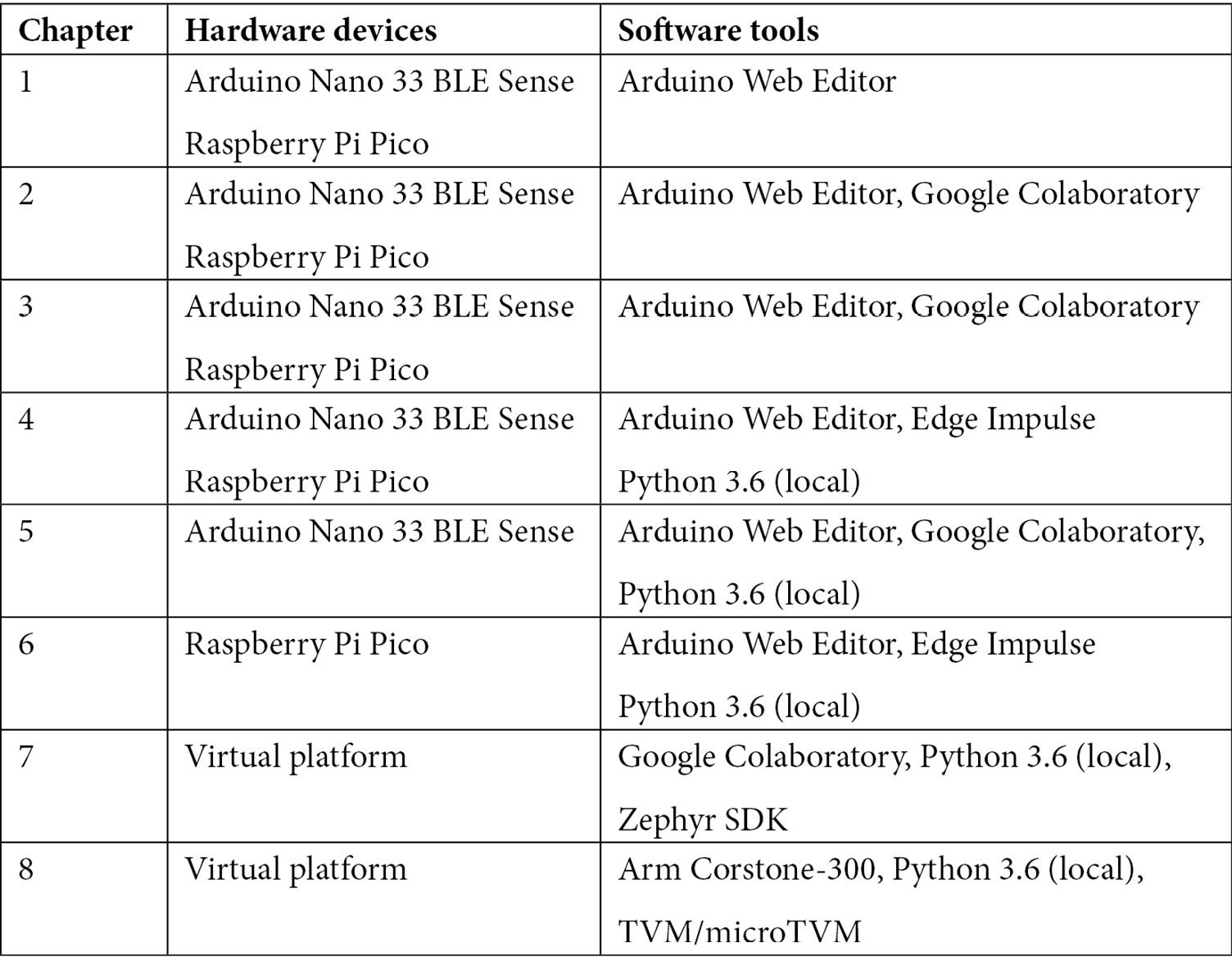To get the most out of this book
You will need a computer (either a laptop or desktop) with an x86-64 architecture and at least one USB port for programming the Arduino Nano 33 BLE Sense and the Raspberry Pi Pico microcontroller boards. For the first six chapters, you can use Ubuntu 18.04 (or later) or Windows (for example, Windows 10) as an OS. However, you will need Ubuntu 18.04 (or later) for Chapter 7, Running a Tiny CIFAR-10 Model on a Virtual Platform with the Zephyr OS, and Chapter 8, Toward the Next TinyML Generation with microNPU.
The only software prerequisites for your computer are:
- Python (Python 3.7 recommended)
- Text editor (for example, gedit on Ubuntu)
- Media player (for example, VLC)
- Image viewer (for example, the default app in Ubuntu or Windows 10)
- Web browser (for example, Google Chrome)
During our TinyML journey, we will require different software tools to cover ML development and embedded programming. Thanks to Arduino, Edge Impulse, and Google, these tools will be in the cloud, browser-based, and with a free plan for our usage.
Arduino Nano 33 BLE Sense and Raspberry Pi Pico programs will be developed directly in the web browser with the Arduino Web Editor (https://create.arduino.cc). However, the Arduino Web Editor has a limit of 200 seconds of compilation time per day. Therefore, you may consider upgrading to any paid plan or using the free local Arduino IDE (https://www.arduino.cc/en/software) to get unlimited compilation time. If you are interested in the free local Arduino IDE, we have provided on GitHub (https://github.com/PacktPublishing/TinyML-Cookbook/blob/main/Docs/setup_local_arduino_ide.md) the instructions to set it up.
The following table summarizes the hardware devices and software tools covered in each chapter:

The projects may require sensors and additional electronic components to build realistic TinyML prototypes and experience the complete development workflow. All the components are listed at the beginning of each chapter and in the README.md file on GitHub (https://github.com/PacktPublishing/TinyML-Cookbook). Since you will build real electronic circuits, we require an electronic components kit that includes at least a solderless breadboard, colored LEDs, resistors, push-buttons, and jumper wires. Don't worry if you are an electronics beginner. You will learn more about these components in the first two chapters of this book. Furthermore, we have prepared a beginner shopping list on GitHub so you know precisely what to buy: https://github.com/PacktPublishing/TinyML-Cookbook/blob/main/Docs/shopping_list.md.
If you are using the digital version of this book, we advise you to type the code yourself or access the code via the GitHub repository (link available in the next section). Doing so will help you avoid any potential errors related to the copying and pasting of code.
Download the example code files
You can download the example code files for this book from GitHub at https://github.com/PacktPublishing/TinyML-Cookbook. In case there's an update to the code, it will be updated on the existing GitHub repository.
We also have other code bundles from our rich catalog of books and videos available at https://github.com/PacktPublishing/. Check them out!



